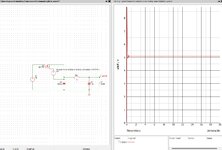sneed
Newbie level 4
Hello,
I am a mechanical engineering student and I am working on a relay controller. My logic circuits all operate on 5v, but my only available power source is 24v. My entire circuit will draw around 250mA normally, with millisecond peaks at 300mA every 10 minutes (relay switching).
I need help designing a buck controller to step the voltage down. It is crucial for my application that I get the maximum efficiency possible- minimizing heat generation. I will have temperature sensors in close proximity to the converter and the logic and I want to avoid "tainting" the data they collect to the best of my ability.
First I checked what is available on the market. Converter ICs based around MP2307 MP1584 LM2596 etc.
"protosupplies.com"
This website has tables under all their product listings showing measured temperature and efficiency values. At first I was surprised to see cheaper ICs using less efficient chips were actually running cooler. But then I quickly realized that the reason was the larger higher quality inductors used on their ICs. Small and cheap components (as well as low surface area) make for more heat generation.
I've done a lot of reading on buck converters, linear regulators, and all of their components and inner workings, as well as the mathematical relations in choosing their parts- in an attempt to design my own. However, I read that components such as inductors and capacitors need to be oversized to compensate for manufacturers overmarketing them with inflated specs. I do not know how to oversize electrical components. The same way I know how to oversize an axle or a shaft; where I know how much larger it needs to be to be stronger- but still play nice with all the other components, I am not that fluent in the realm of electrical engineering. I've played around with multiple parts spec calculators on reputable vendor sites in an attempt to get somewhere.
I feel lost and I am here to ask for the help of someone well versed in this topic, with practical real life experience in the field, who can advise me on how to choose my parts.
Important points:
24v to 5v
250-300mA draw on the 5v side
Cost and size are irrelevant- need the best performance possible
Minimum heat generation
Best chip? inductor spec? capacitor spec? *for my application
any input helps
Currently am leaning towards this chip: MP2315S. Is there a better one?
If you would be so kind as to offer advice or even recommendations, please explain your reasoning so that I can learn.
Thanks a million
*I could not find any rule against it so I am sorry if this is against the rules but I am willing to pay for your expertise. If this is against the rules please let me know I will edit it out*
I am a mechanical engineering student and I am working on a relay controller. My logic circuits all operate on 5v, but my only available power source is 24v. My entire circuit will draw around 250mA normally, with millisecond peaks at 300mA every 10 minutes (relay switching).
I need help designing a buck controller to step the voltage down. It is crucial for my application that I get the maximum efficiency possible- minimizing heat generation. I will have temperature sensors in close proximity to the converter and the logic and I want to avoid "tainting" the data they collect to the best of my ability.
First I checked what is available on the market. Converter ICs based around MP2307 MP1584 LM2596 etc.
"protosupplies.com"
This website has tables under all their product listings showing measured temperature and efficiency values. At first I was surprised to see cheaper ICs using less efficient chips were actually running cooler. But then I quickly realized that the reason was the larger higher quality inductors used on their ICs. Small and cheap components (as well as low surface area) make for more heat generation.
I've done a lot of reading on buck converters, linear regulators, and all of their components and inner workings, as well as the mathematical relations in choosing their parts- in an attempt to design my own. However, I read that components such as inductors and capacitors need to be oversized to compensate for manufacturers overmarketing them with inflated specs. I do not know how to oversize electrical components. The same way I know how to oversize an axle or a shaft; where I know how much larger it needs to be to be stronger- but still play nice with all the other components, I am not that fluent in the realm of electrical engineering. I've played around with multiple parts spec calculators on reputable vendor sites in an attempt to get somewhere.
I feel lost and I am here to ask for the help of someone well versed in this topic, with practical real life experience in the field, who can advise me on how to choose my parts.
Important points:
24v to 5v
250-300mA draw on the 5v side
Cost and size are irrelevant- need the best performance possible
Minimum heat generation
Best chip? inductor spec? capacitor spec? *for my application
any input helps
Currently am leaning towards this chip: MP2315S. Is there a better one?
If you would be so kind as to offer advice or even recommendations, please explain your reasoning so that I can learn.
Thanks a million
*I could not find any rule against it so I am sorry if this is against the rules but I am willing to pay for your expertise. If this is against the rules please let me know I will edit it out*
Last edited:

